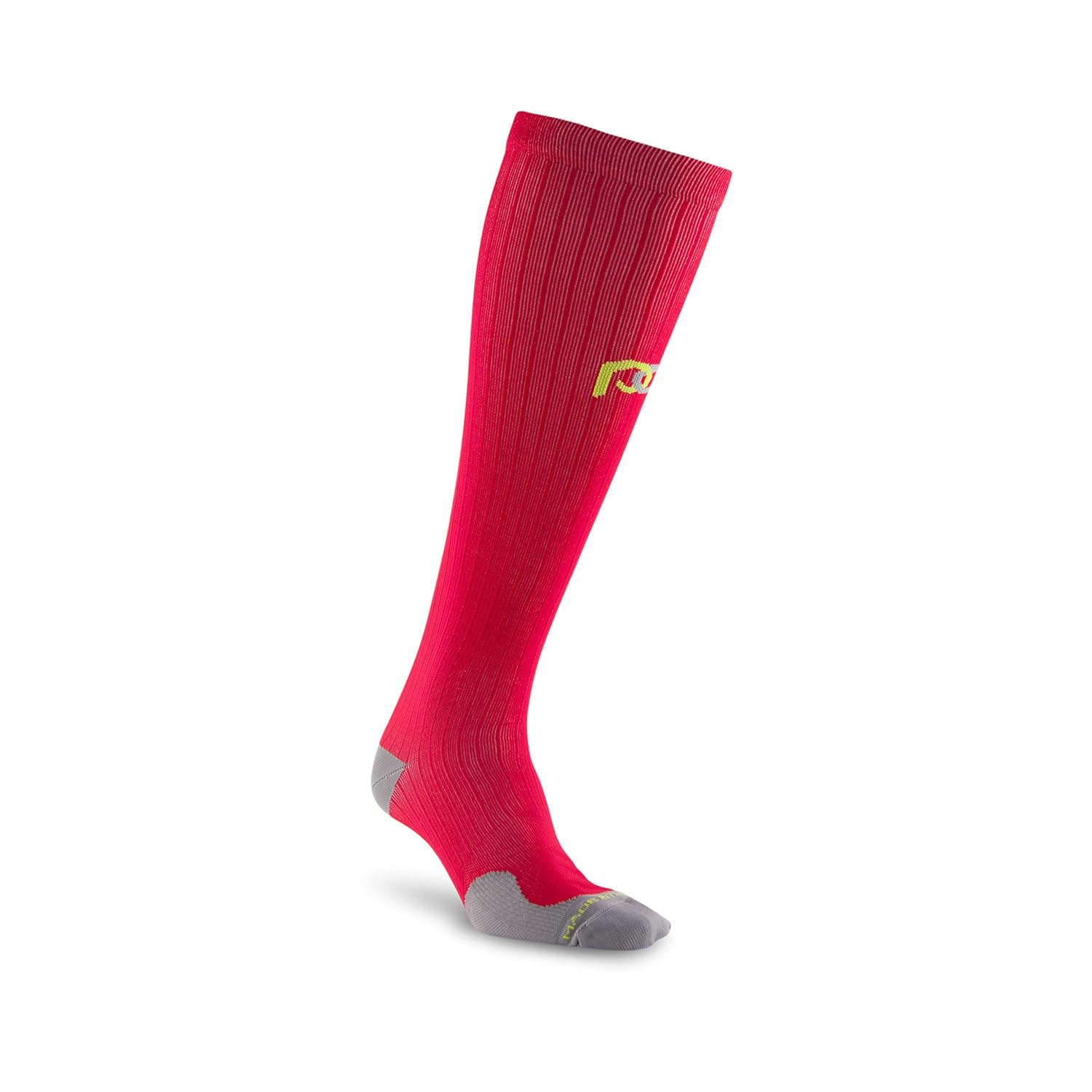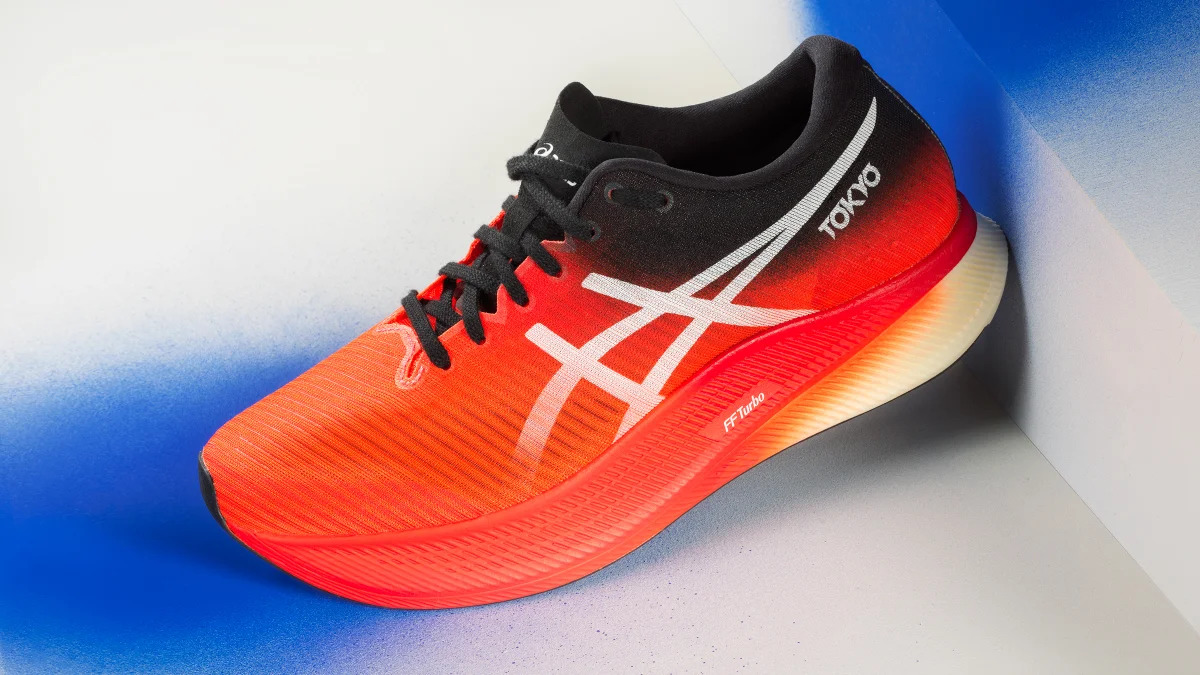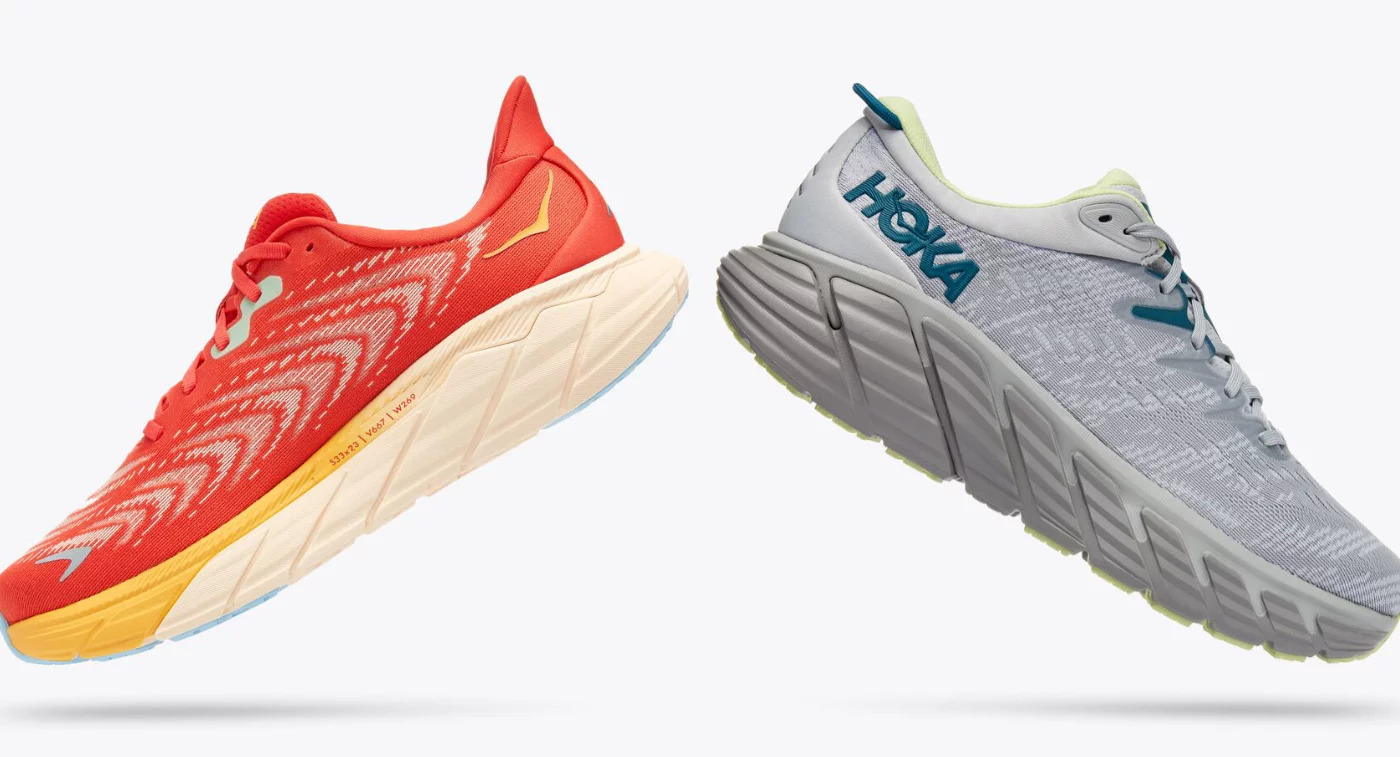Home>Misc>Featured>What Are The Best Running Shoes For Shin Splints


Featured
What Are The Best Running Shoes For Shin Splints
Modified: May 22, 2024
Looking for the best running shoes to prevent shin splints? Check out our featured selection of top-quality footwear designed to provide optimal support and cushioning.
Introduction
Shin splints are a common and sometimes debilitating condition that many runners and athletes experience. It is characterized by pain and discomfort along the inner edge of the shin bone (tibia). If you have ever dealt with shin splints, you know how frustrating and painful they can be, often hindering your ability to continue with your training or exercise routine.
Proper footwear plays a crucial role in preventing and alleviating shin splints. Choosing the right running shoes can provide the necessary support, cushioning, and stability to protect your shins from excessive stress and strain. Not all running shoes are created equal, and it is essential to find a pair that best suits your specific needs and biomechanics.
In this article, we will delve into the world of running shoes for shin splints, exploring the factors that contribute to this condition and the importance of selecting the right footwear. We’ll also highlight the top ten best running shoes that are specifically designed to prevent and alleviate shin splints, providing you with the necessary information to make an informed decision when it comes to your running shoe selection.
So, whether you are a seasoned runner, a weekend warrior, or just starting your running journey, this article will serve as your guide to finding the best running shoes for shin splints. Let’s dive in and explore the world of footwear that can help you overcome shin splints and enhance your running experience.
Understanding Shin Splints
Shin splints, medically known as medial tibial stress syndrome (MTSS), refer to the pain and inflammation that occur along the inner edge of the tibia, or shinbone. It is a common condition that is frequently experienced by runners and athletes who engage in high-impact activities. Understanding the causes and symptoms of shin splints is crucial in effectively managing and preventing this condition.
Shin splints are typically caused by overuse or repetitive stress placed on the shinbone and the connective tissues surrounding it. This excessive stress causes tiny tears in the muscles, tendons, and bone tissue, leading to pain and inflammation. Runners who increase their training intensity or duration too quickly, change their running surface, or wear inappropriate footwear are more susceptible to developing shin splints.
The symptoms of shin splints can vary from mild discomfort to intense pain. Common signs include a dull ache or throbbing sensation along the inner part of the shin, tenderness to touch, and swelling. The pain is often aggravated during physical activity and can persist even at rest if the condition is severe.
It’s important not to ignore the signs of shin splints, as untreated or neglected shin splints can lead to more serious injuries such as stress fractures. Seeking proper diagnosis and treatment from a medical professional is recommended to effectively manage this condition and prevent further complications.
In addition to seeking medical advice, it is crucial to address the underlying causes of shin splints. One of the key factors in preventing and managing shin splints is choosing the right running shoes. Proper footwear can provide the necessary support, cushioning, and stability to reduce stress on the shins and prevent the development or worsening of shin splints.
In the following sections, we will explore the importance of proper running shoes in preventing and alleviating shin splints. We will discuss the specific factors to consider when selecting running shoes for shin splints and highlight the top ten best running shoes that are designed to provide optimal support and protection for those dealing with this condition.
Now that we have a better understanding of shin splints, let’s dive into the significance of finding the right running shoes to effectively manage and prevent this common running injury.
Causes of Shin Splints
Shin splints can be caused by a variety of factors, all of which contribute to the excessive stress and strain on the muscles, tendons, and bones of the lower leg. Understanding these causes can help in effectively preventing and managing shin splints.
1. Overuse and High-Impact Activities: Shin splints often occur due to overuse or repetitive stress on the shinbone. This is particularly common in activities that involve running, jumping, or other high-impact movements. Increasing the intensity or duration of these activities too quickly can place excessive strain on the lower leg, leading to the development of shin splints.
2. Poor Biomechanics and Foot Structure: Issues with foot mechanics and structure can contribute to the development of shin splints. Flat feet, high arches, or pronation (inward rolling of the foot) can alter the forces exerted on the lower leg, increasing the risk of shin splints. When the foot pronates excessively, it can cause the muscles in the lower leg to overwork, leading to pain and inflammation.
3. Inappropriate Footwear: Wearing improper shoes while engaging in physical activities can significantly contribute to shin splints. Shoes that lack proper support, cushioning, or stability can increase the impact on the lower leg, leading to discomfort and pain. It’s essential to choose running shoes that are specifically designed for your foot type and activity level to minimize the risk of shin splints.
4. Training Errors: Inadequate warm-up, improper stretching techniques, and failure to incorporate rest days into your training regimen can all contribute to the development of shin splints. It’s important to gradually increase your training intensity and duration, allowing your body enough time to adapt and recover. Ignoring these basic training principles can overload the muscles and bones of the lower leg, leading to shin splints.
5. Running Surface: The surface you run on can also play a role in the development of shin splints. Hard and uneven surfaces, such as concrete or asphalt, can increase the impact on the lower leg, increasing the risk of shin splints. It’s recommended to vary your running surfaces and incorporate softer surfaces, such as grass or a track, to reduce the strain on your shins.
By understanding the causes of shin splints, you can take proactive measures to prevent their occurrence or alleviate their symptoms. One of the primary preventive measures is choosing the right running shoes that provide the necessary support, cushioning, and stability to minimize stress on the lower leg. In the next section, we will explore the importance of proper running shoes for shin splints and discuss the factors to consider when selecting the best footwear to suit your needs.
Importance of Proper Running Shoes
When it comes to preventing and managing shin splints, the significance of wearing proper running shoes cannot be overstated. The right footwear can provide the necessary support, cushioning, and stability to protect your shins from excessive stress and strain, reducing the risk of developing or worsening shin splints.
One of the primary benefits of wearing proper running shoes is shock absorption. Every time your foot strikes the ground while running, a significant amount of impact force is transmitted through your body, particularly the lower legs. Running shoes with adequate cushioning can effectively absorb and disperse this impact force, reducing the strain on your shins and decreasing the likelihood of developing shin splints.
Proper running shoes also provide stability, particularly in the midsole and heel areas. This stability helps to control excessive inward rolling of the foot (overpronation) or outward rolling of the foot (supination). When the feet roll excessively, it can place increased stress on the muscles and tendons of the lower leg, leading to shin splints. Running shoes with features like a medial post or reinforced arch support can help correct these biomechanical issues and promote a more efficient and stable gait.
Choosing running shoes that are suitable for your specific foot type is essential in preventing and managing shin splints. Different individuals have different foot structures – such as flat feet, high arches, or neutral arches – that require specific types of support. For example, individuals with flat feet often require shoes with good arch support, while those with high arches may benefit from shoes with increased cushioning.
Durability is another key factor to consider when selecting running shoes for shin splints. As runners and athletes, we put our shoes through rigorous use, and shoes that lack durability can lose their supportive and cushioning properties quickly. It’s crucial to choose running shoes that are built to withstand the demands of your training or exercise routine, ensuring that they provide consistent support and protection over time.
Moreover, proper running shoes can also contribute to overall comfort during your runs or workouts. Shoes that fit well, have breathable uppers, and provide ample room for your toes can enhance your running experience and reduce the risk of discomfort or blisters that may lead to altered biomechanics and shin splints.
Investing in high-quality, properly fitting running shoes is a worthwhile investment in your running performance and injury prevention efforts. The next section will provide you with valuable insights into the specific factors you should consider when choosing the best running shoes for shin splints. By understanding these factors, you’ll be able to make an informed decision and find the ideal footwear to support and protect your shins.
Factors to Consider for Choosing Running Shoes for Shin Splints
When it comes to selecting running shoes for shin splints, there are several important factors to consider. These factors will help you find the best footwear that provides the necessary support, cushioning, and stability to prevent and alleviate shin splints. Here are some key considerations:
1. Arch Support: Determining your foot arch type is crucial in finding shoes with appropriate arch support. Flat feet typically require shoes with higher arch support to help control excessive pronation, while higher arches may benefit from shoes with a more neutral arch support. Look for shoes that provide the right level of support for your specific foot structure.
2. Cushioning: Adequate cushioning in the midsole helps absorb impact and reduce strain on your shins. Look for shoes with sufficient cushioning to provide a comfortable and shock-absorbing experience. However, keep in mind that too much cushioning can also affect stability, so finding the right balance is important.
3. Stability Features: Supportive stability features such as a medial post or reinforced arch support can help control overpronation and prevent excessive rolling of the foot. These features enhance stability and reduce the risk of shin splints caused by biomechanical inefficiencies. Look for shoes that offer stability features tailored to your specific needs.
4. Heel Drop: Heel drop refers to the height difference between the heel and the forefoot of a shoe. Shoes with a higher heel drop can provide additional cushioning and reduce strain on the shins by promoting a more natural foot strike. However, it’s important to note that the ideal heel drop may vary depending on your personal preferences and running style.
5. Fit and Comfort: Proper fit is crucial for preventing shin splints. Shoes that are too tight can restrict blood flow and cause discomfort, while shoes that are too loose may lead to instability. Look for shoes that provide a snug fit in the heel and midfoot area, with enough room in the toe box to allow for natural toe movement.
6. Durability: Consider the durability of the shoes, especially if you are engaging in high-impact activities or have a rigorous training routine. Choose shoes that are built to last and can withstand the demands of your exercise regimen. A durable shoe will provide consistent support and cushioning to prevent the development of shin splints.
7. Breathability: Look for shoes with breathable uppers that allow airflow to keep your feet cool and dry during your workouts. Excessive moisture and heat can lead to discomfort and increase the risk of blisters or other foot issues that may contribute to altered biomechanics and shin splints.
Remember that each individual’s needs may vary, so it’s essential to consider your own biomechanics, foot structure, and running style when selecting running shoes for shin splints. If possible, visit a specialized running store or seek advice from a qualified professional to ensure you find the best shoes that cater to your specific requirements.
Now that you have a better understanding of the factors to consider, we will guide you through the top ten best running shoes for shin splints in the next section.
Top 10 Best Running Shoes for Shin Splints
When it comes to finding the best running shoes for shin splints, there are numerous options available that provide the necessary support and cushioning to prevent and alleviate this common condition. Here are the top ten running shoes specifically designed to address shin splints and ensure a comfortable and injury-free running experience:
- Nike Air Zoom Pegasus: Known for its versatile design and cushioning, the Nike Air Zoom Pegasus offers excellent shock absorption and responsiveness. It provides a comfortable fit and is suitable for various running styles.
- Brooks Ghost: The Brooks Ghost is a popular choice among runners for its balance of cushioning and support. It features a smooth ride and secure fit, making it a great option for those dealing with shin splints.
- ASICS Gel-Nimbus: ASICS Gel-Nimbus is known for its exceptional cushioning and support. It features the brand’s gel technology for shock absorption and provides a snug and comfortable fit.
- Saucony Guide: The Saucony Guide is a stability shoe that offers excellent support and cushioning. It helps correct pronation issues and provides a comfortable and secure fit for runners with shin splints.
- New Balance 1080: The New Balance 1080 is renowned for its plush cushioning and stability features. It offers a soft yet supportive feel and helps reduce the impact on the shins during runs.
- Hoka One One Bondi: The Hoka One One Bondi is well-known for its maximal cushioning. It provides excellent shock absorption and is highly recommended for runners seeking added protection for their shins.
- Adidas Ultraboost: The Adidas Ultraboost offers a combination of cushioning, support, and energy return. It provides a comfortable and responsive ride, ideal for runners looking to alleviate shin splints.
- Mizuno Wave Rider: The Mizuno Wave Rider is a lightweight shoe that delivers a smooth and responsive ride. It offers a combination of cushioning and stability, making it suitable for runners dealing with shin splints.
- Under Armour HOVR Infinite: The Under Armour HOVR Infinite features excellent cushioning and energy return. It offers a secure fit and helps minimize the impact on your shins during workouts.
- Salomon Speedcross: The Salomon Speedcross is a trail running shoe known for its exceptional traction and stability. It provides reliable support and cushioning, making it a great option for trail runners with shin splints.
These are just a few of the many running shoe options available to individuals dealing with shin splints. Remember, the best running shoe for you will depend on your specific needs, foot structure, and running style. Consider trying on different pairs and seeking expert advice to find the perfect fit that supports your shins and enhances your running experience.
Now that you have a list of top-notch running shoes, you can make a more informed decision and choose the pair that best suits your needs. Investing in high-quality footwear will go a long way in preventing and managing shin splints, allowing you to enjoy your runs without discomfort or pain.
Conclusion
Shin splints may be a common and frustrating condition, but with the right approach, they can be effectively managed and prevented. One of the key factors in preventing and alleviating shin splints is choosing the proper running shoes. The right footwear provides the necessary support, cushioning, and stability to protect your shins from excessive stress and strain.
Understanding the causes of shin splints is crucial in addressing this condition. Factors such as overuse, improper biomechanics, wearing inadequate shoes, training errors, and running on hard surfaces can all contribute to the development of shin splints. By addressing these factors and adopting a preventive mindset, you can minimize the risk of developing shin splints and maximize your running performance.
When selecting running shoes for shin splints, consider important factors such as arch support, cushioning, stability features, fit and comfort, durability, and breathability. These factors will help you find the shoes that best suit your specific needs and provide the necessary protection against shin splints.
As mentioned, there are several high-quality running shoe options available for individuals dealing with shin splints. The top ten shoes highlighted in this article include the Nike Air Zoom Pegasus, Brooks Ghost, ASICS Gel-Nimbus, Saucony Guide, New Balance 1080, Hoka One One Bondi, Adidas Ultraboost, Mizuno Wave Rider, Under Armour HOVR Infinite, and Salomon Speedcross. However, it’s important to remember that the best running shoe for you depends on your individual needs and preferences.
By investing in proper running shoes and taking steps to prevent shin splints, you can enhance your running experience and minimize the risk of injury. Remember to gradually increase your training intensity, incorporate proper warm-ups and stretches, listen to your body, and vary your running surfaces to reduce the strain on your shins.
In conclusion, selecting the right running shoes for shin splints is a vital step in preventing and managing this common condition. By prioritizing support, cushioning, and stability, and considering factors such as arch support, fit, and durability, you can find the perfect footwear to protect your shins and enjoy pain-free runs. Take the time to explore different options, seek expert advice if needed, and invest in high-quality shoes that will support your running goals and keep shin splints at bay.









